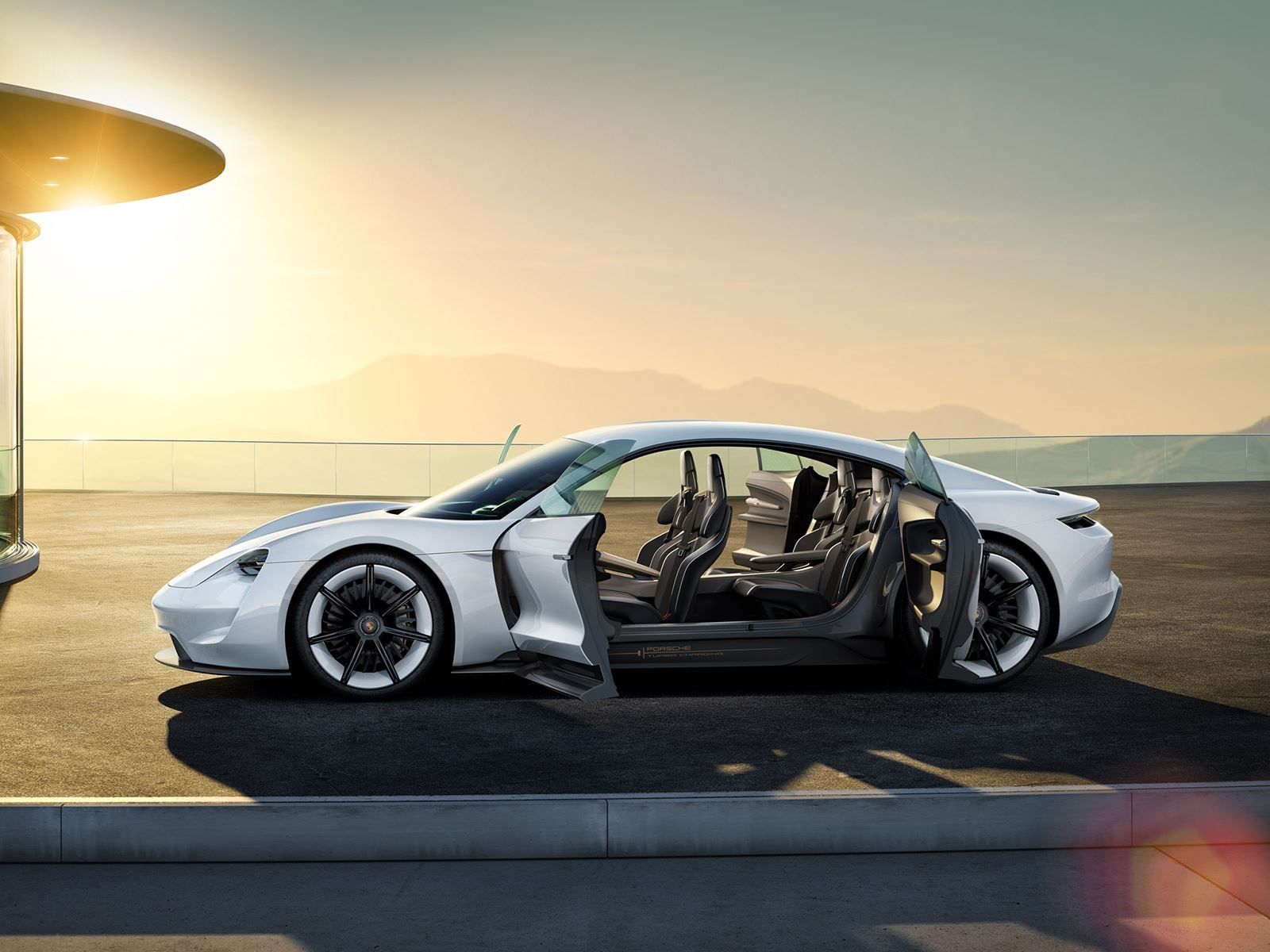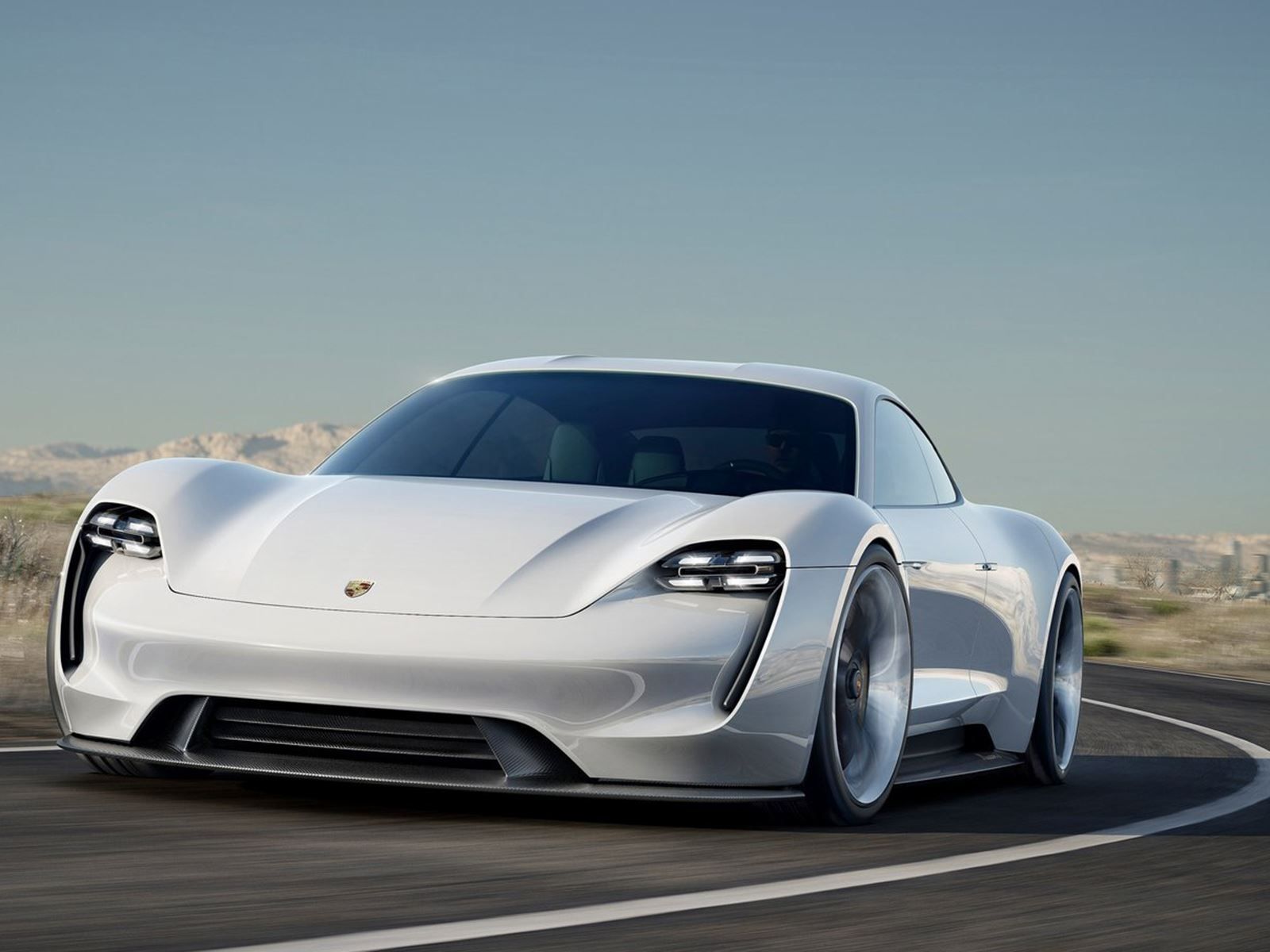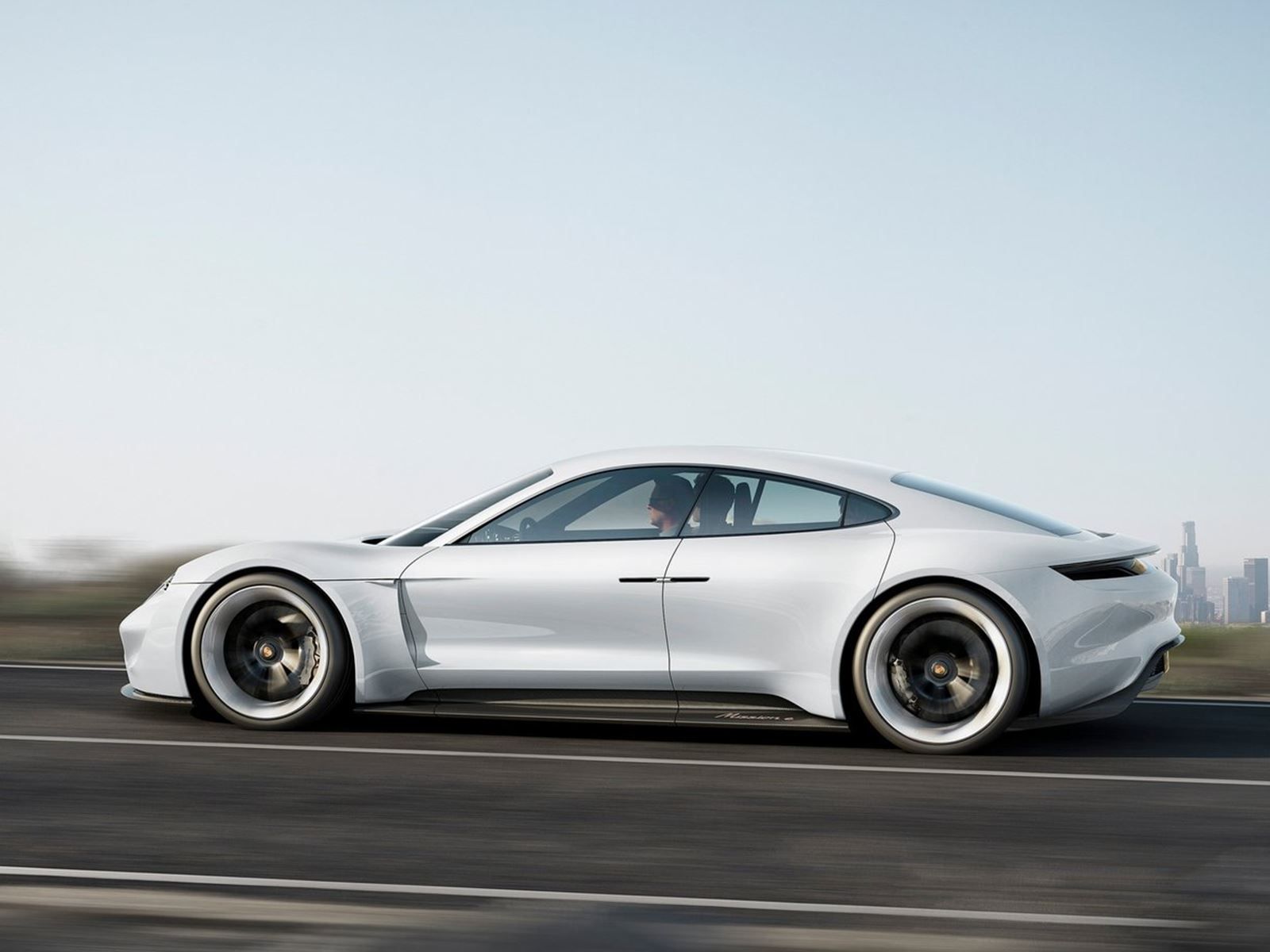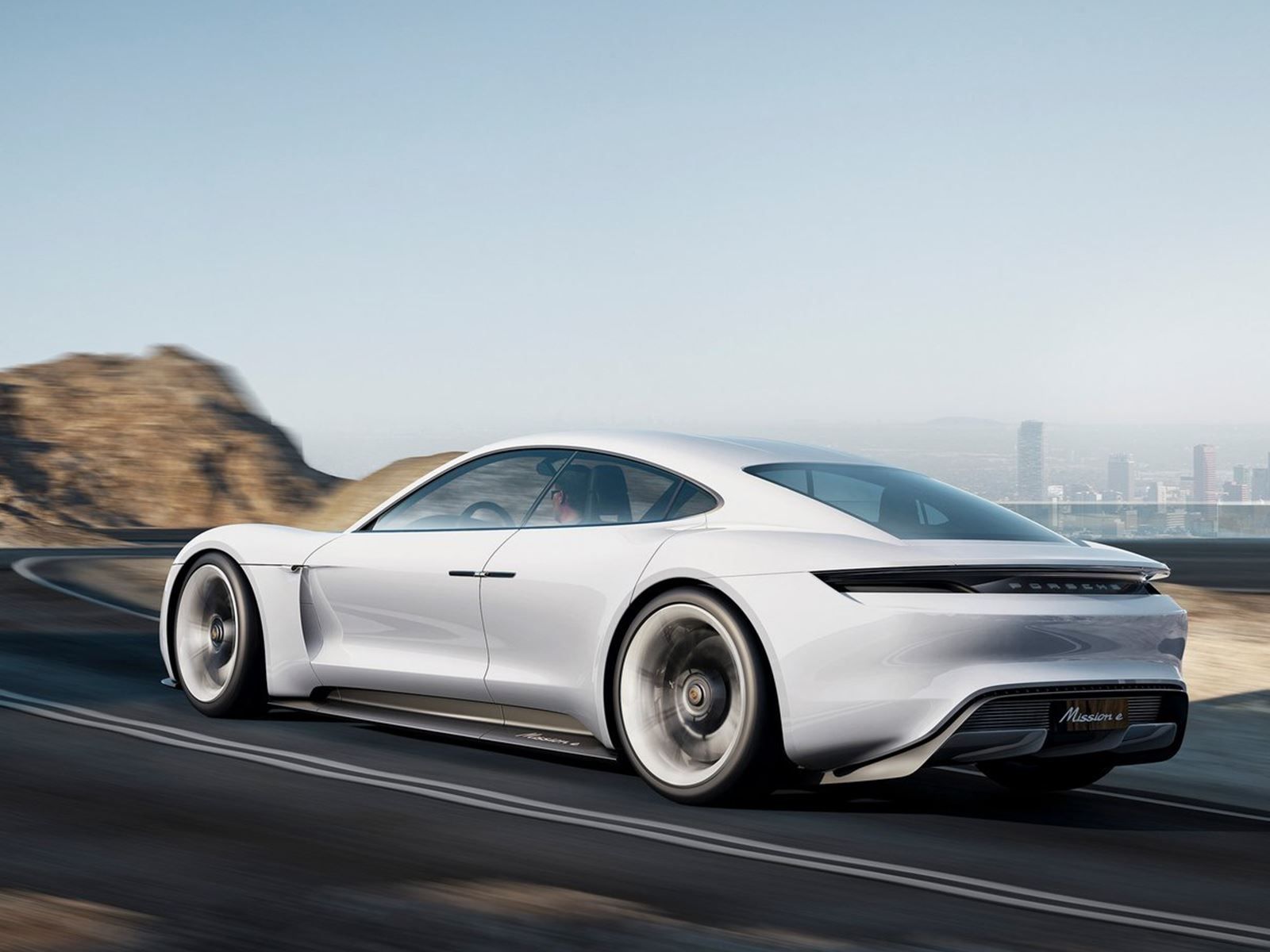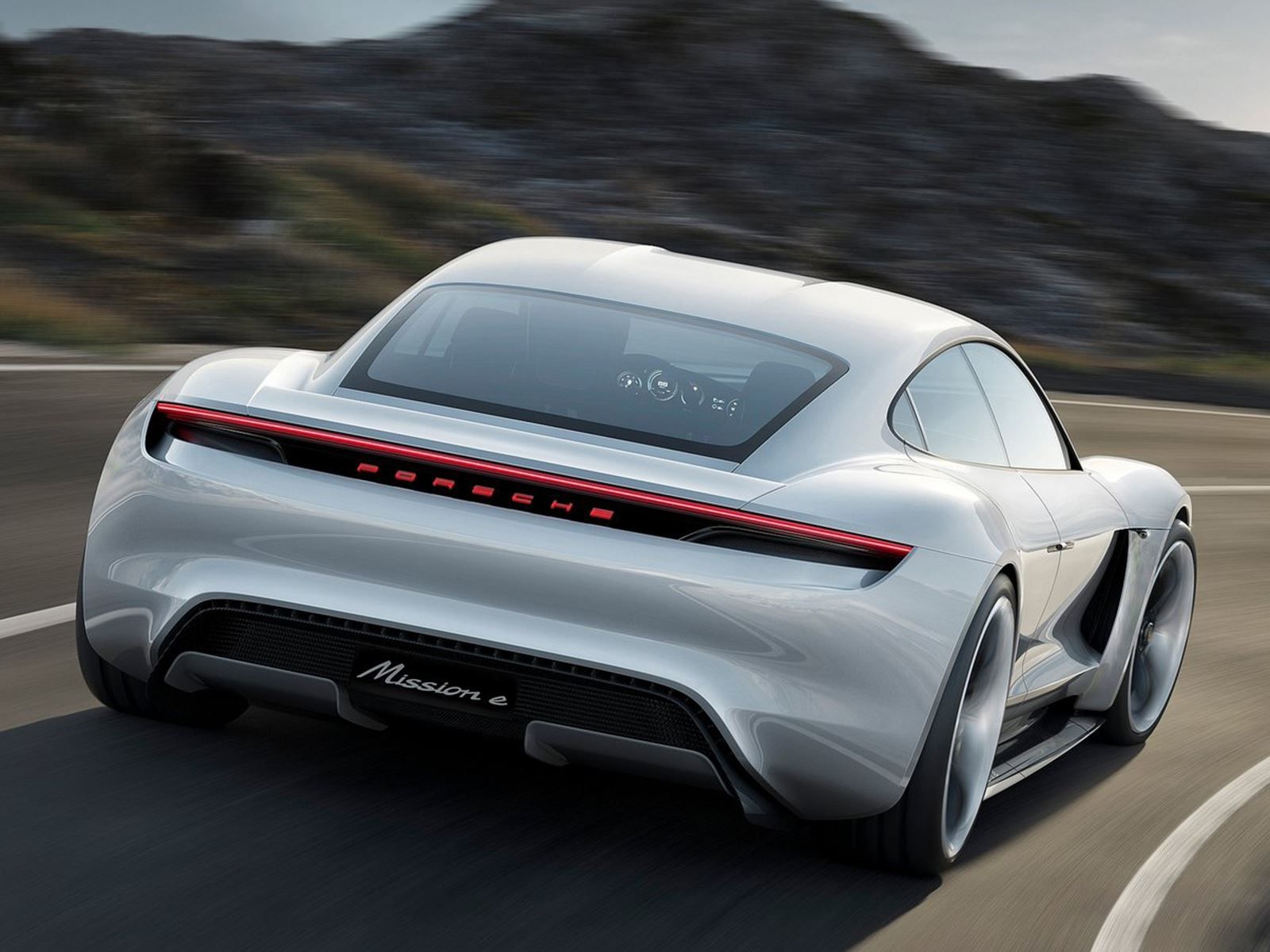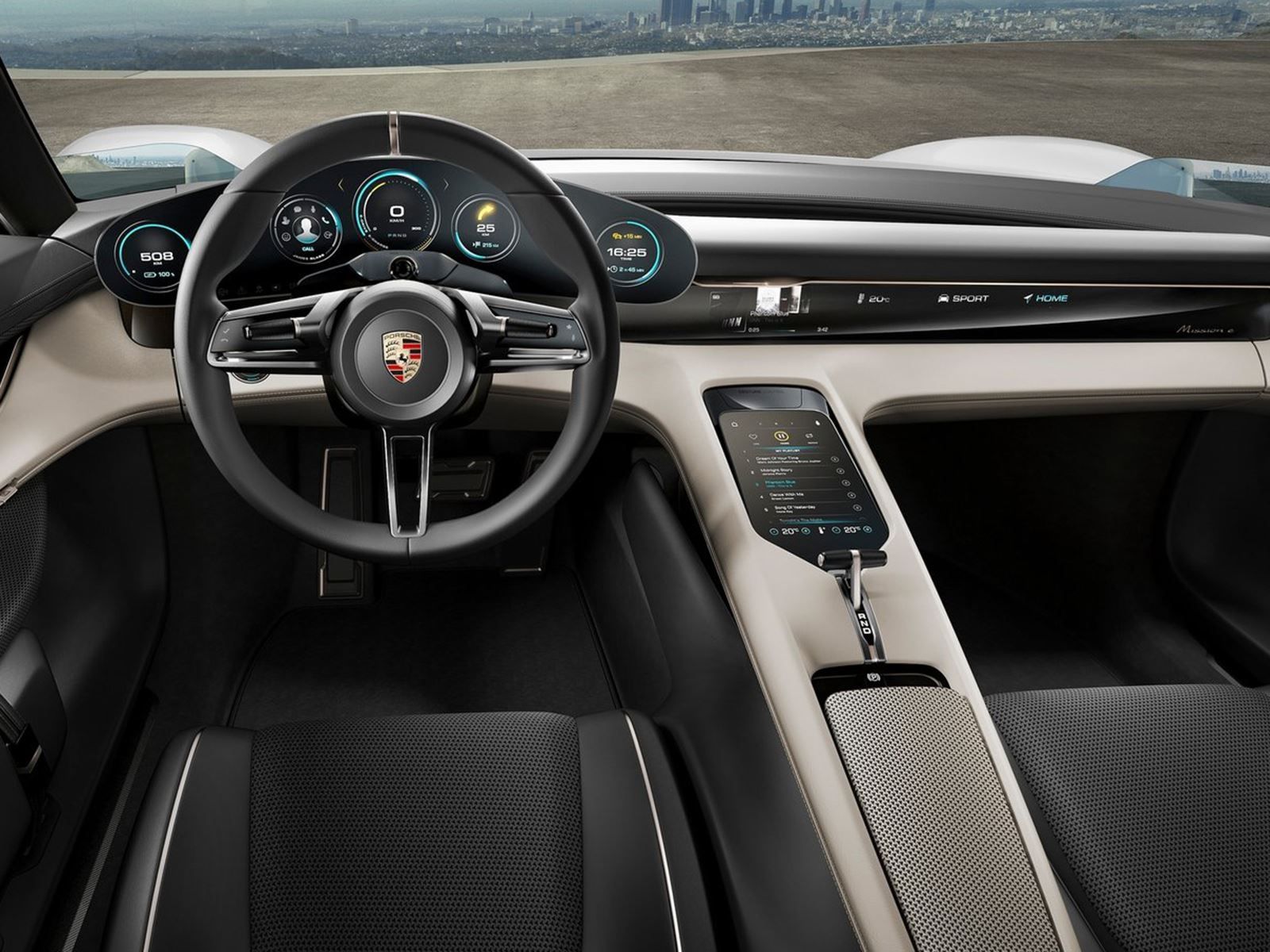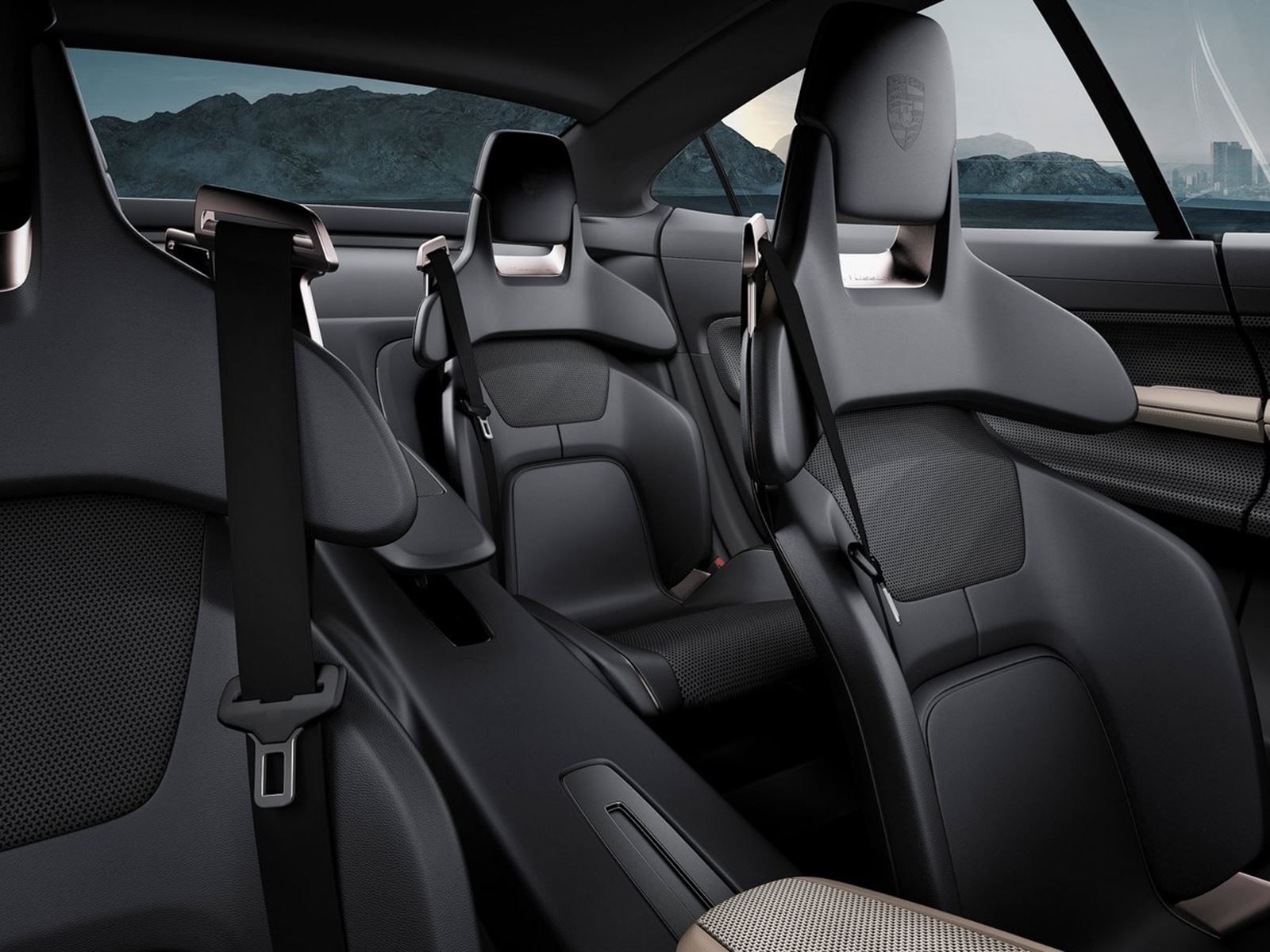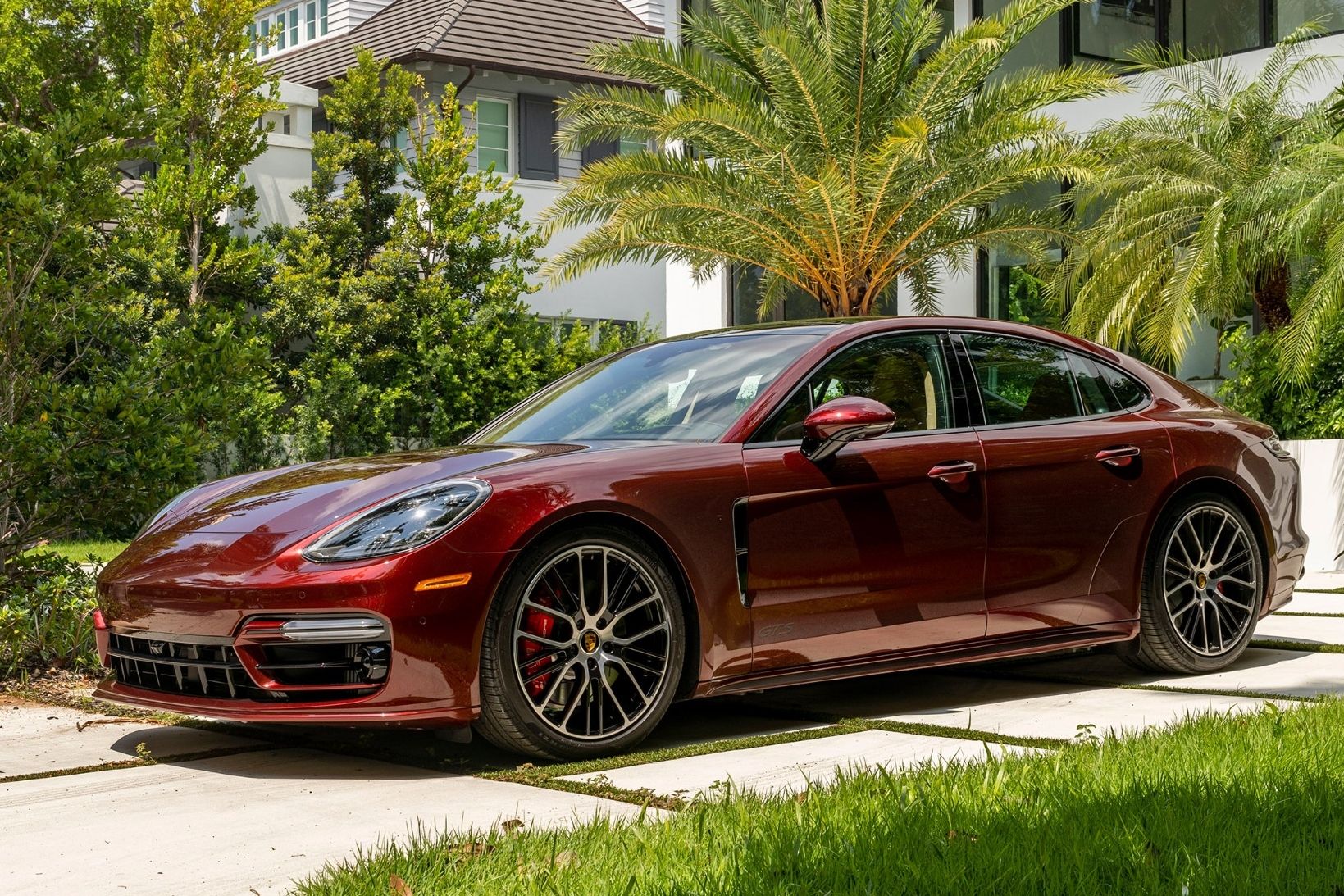
Suicide doors and bewitching looks courtesy of years of experience crafting pretty faces for cars that need no grilles are two of the main facets that make the Porsche Mission E Concept the desirable Tesla Model S-fighter we know it to be. And though we know Porsche is going to do everything it can to preserve the concept's Adonis proportions all the way to the dealership, not much was known about how the hardware will materialize outside of a few specs pulled from fantasyland during interviews with the engineering team.
No longer is that so. Automobile Magazine recently scored one lucky journalist a spot driving one of the only hand-built Mission E test vehicles in existence alongside the 911 GT2 RS, and through their trial they've come away with juicy tidbits of information to hold over our curiosity until the real deal is out. Out of Mission E project leader Stefan Weckbach's lips, Automobile dug out an underlying design philosophy baked into the electric sedan. "The production version is in essence a C-segment sedan with an almost D-size interior," explains Weckbach. "Visually, the car combines 911 overtones with fresh proportions and very good space utilization even though the Mission E is notably more compact than the Panamera."
That's to be expected from a car that combines the aesthetic of Porsche's most popular sports car with electronically-provided performance prowess. Still, there's no way Porsche was going to have an easy time working out how the car will feel like on the road or track. Not only will the automaker have to work with a new and relatively unfamiliar technology to preserve the driving feel of a Porsche, but it has to beat competition that has yet to materialize (unless you count the Model S). To combat its only current competitor, the Mission E calls upon a low center of gravity and hellish power to become a vehicle that's "more rewarding to drive than a Model S."
About that performance. Porsche is currently planning 3 output ranges, a 300 kW setup that makes 402 horsepower, 400 kW batteries pushing 536 horses, and a 500 kW unit delivering a walloping 670 ponies-each with badging that will mirror current lineup offerings. All-wheel drive will come standard on all Mission Es, but Porsche hasn't ruled out a bottom-of-the-pack rear wheel-drive model for budget buyers. No mention of whether or not the AWD models will have a "drift mode" of sorts that cuts power to the front wheel-drive module as well as the traction control unit to help performance freaks better accept this electric future we're stepping into.
With both the traction control and front wheels active again, the quickest Mission E models should hit 0-60 mph in the mid-three-second range and top out at an Autobahn-friendly 155 mph. Engineers are working to squeeze a 300-mile real world range out of the batteries, which can also be recharged to 80% capacity in 20 minutes or less. Porsche will make this happen by using a proposed 800-volt capacity, the first for any production car, or a more modest 400-volt setup if that proves too difficult. Along with quick recharge times, Porsche wants performance repeatability to be a hallmark of its electric lineup, which will require the use of clever design to ensure that batteries and motors don't get too hot when undergoing abuse.
The best part about the Mission E, aside from its performance and looks, will be the price. Porsche is looking to undercut Tesla by slotting it between the Cayenne and Panamera on the price scale-in the neighborhood of $75,000-$80,000-when it's released in late 2019. If that's the case, we expect Porsche to sell every one of the 20,000-30,000 units its sales team is looking to move annually.

